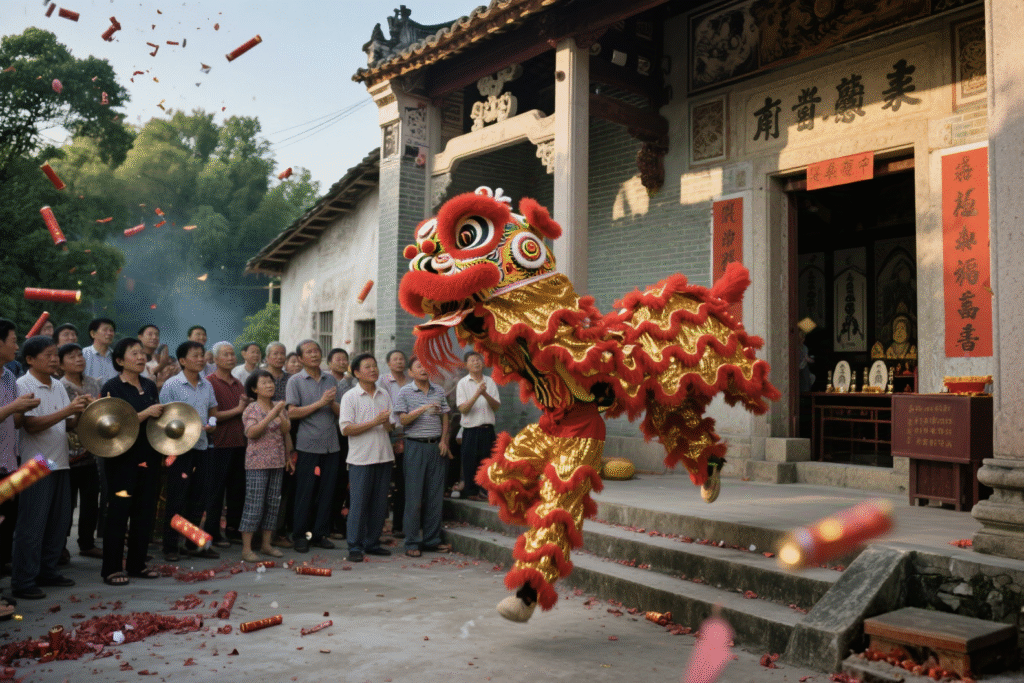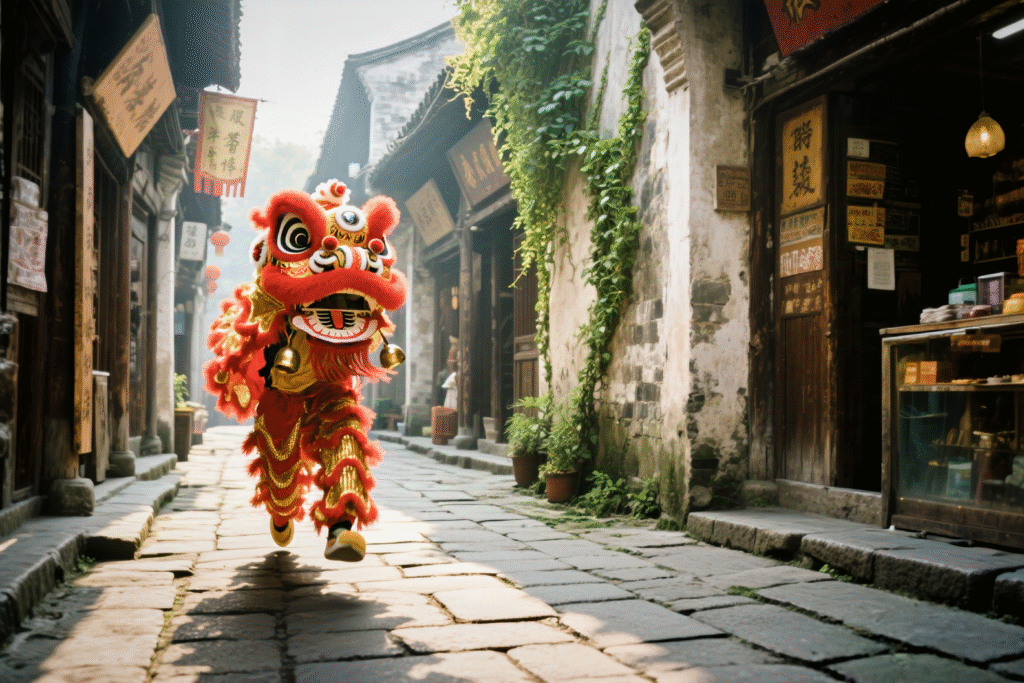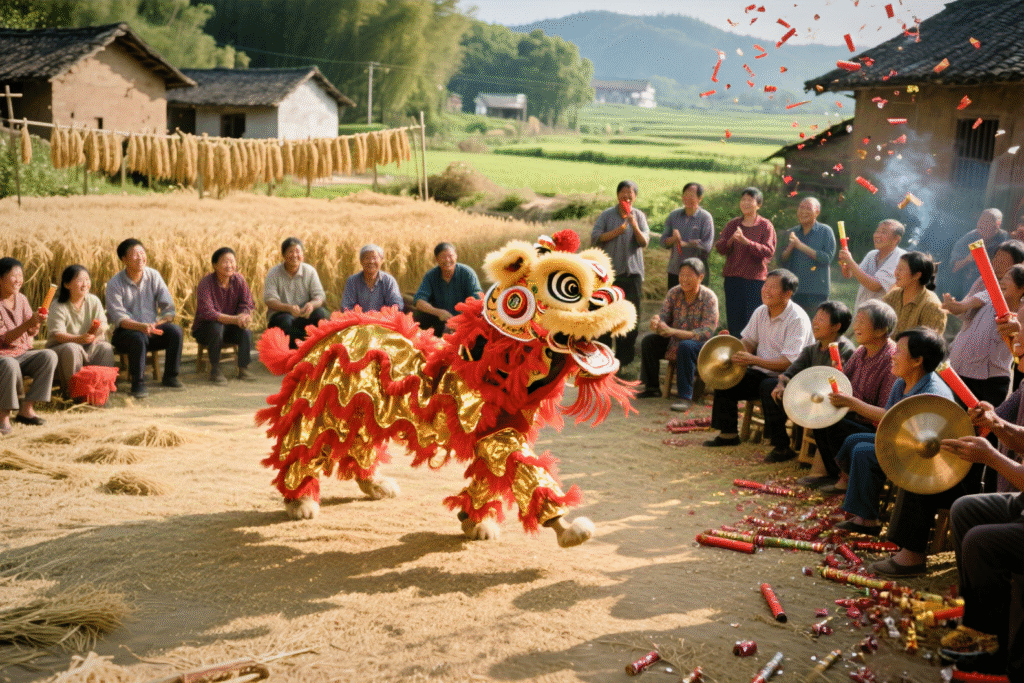Eastern Auspice in Drumbeats:
How Chinese Lion Dance Spreads Millennia of Blessings

Amid firecrackers and the clang-clang-clang of gongs, a crimson-and-gold lion leaps skyward—the pulsating heart of Chinese festivities.
Rooted in the Han Dynasty, ancient belief held lions could ward off evil and summon fortune. Thus emerged this art: bamboo-framed, silk-bodied, animating prayers through motion.
Taditional Chinese lion Dance Performance
Traditional lion dance splits into northern and southern styles:
Northern lions are majestic, cloud-like manes billowing as they mimic pouncing and tumbling.
Southern lions, agile with mirror-foreheads and pom-pom horns, crown in Guangdong’s Xing Shi.

During Lunar New Year or shop openings, dancers master feats like “eye-blinking” and “Cai Qing” (采青, plucking the greens)—eliciting roars when the lion snatches lettuce (“sheng cai”, homophone for “wealth”) from high poles. Intriguingly, lion heads encode lore: Guan Yu’s red face for loyalty, Zhang Fei’s black for courage, Liu Bei’s yellow for benevolence—each a stroke of Chinese symbolism.
Handcrafted lion Props

Today, handcrafted lion props revitalize celebrations. Artisans weave bamboo frames, drape silk skins, and paint motifs—from Bagua trigrams to clouds—each pattern a blessing. Auspicious lion figurines, crouching or leaping, become cherished home guardians embodying peace and joy.
To feel authentic festivity, witness a traditional Chinese lion dance performance or adopt an auspicious lion figurine—carrying millennia’s blessings into your life.